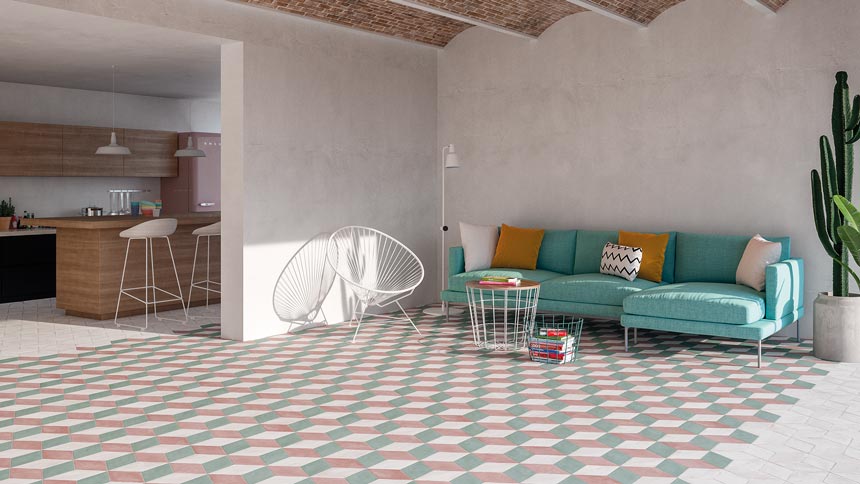
Let’s just assume for a minute that you’re looking for new tiles for a home improvement project. BUT, do you know the differences between ceramic vs porcelain tiles to make the right choice? If not, then allow me as a professional in the design industry to shed some light on ceramic vs porcelain tiles.
The key difference between ceramic tiles vs porcelain tiles lies in the genetic composition (raw materials) and production process (different firing temperatures and time-frames). That is why there are some important arising differences to them despite their similarities.
Time needed to read (min): 7 minutes
This guide on what you need to know about “Ceramic vs Porcelain Tiles” in glance:
- The differences
A quick overview.
- Types of Porcelain Tiles
Homogenous and glazed tiles.
- How to Tell a Ceramic from a Porcelain Tile
Tell-tale features between ceramic and porcelain tiles that will help you distinguish what type of tile you are looking at.
- Cost Difference
Which is more expensive.
- Distinguishing the Type of Tile in Existing Installations
How to tell in an existing installation what type of tile has been used.
- Ceramic or porcelain?
Which tile should you choose & what if you have underfloor heating.
The Differences (Quick Overview)
Ceramic tiles are made of red, brown or white less dense clay. Porcelain tiles on the other hand are made of white, denser and harder clay and perhaps some sand and feldspar additives. Furthermore, porcelain tiles are kiln-fired at much higher temperatures and usually over a longer period of time.
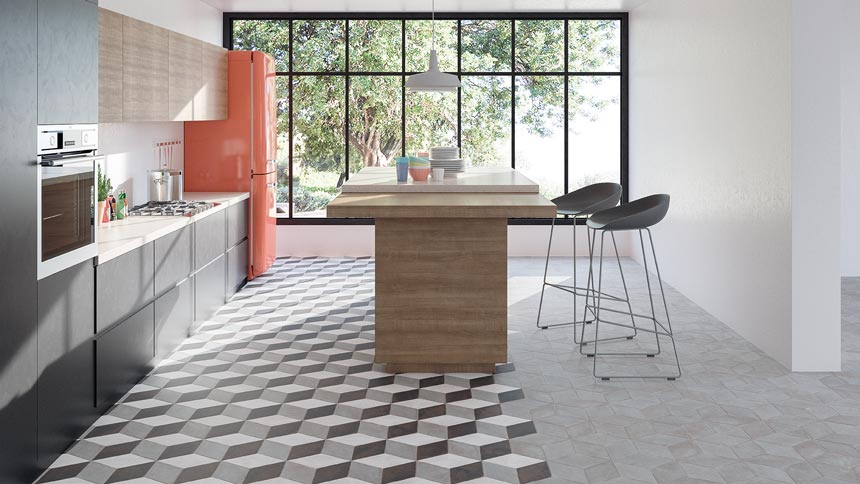
However, it is their porosity attribute based on a water absorption test that ultimately defines their classification to ceramic or porcelain. In every case, porcelain tiles are stronger and more resistant to hard-wear, less absorbent and hence, more stain resistant.

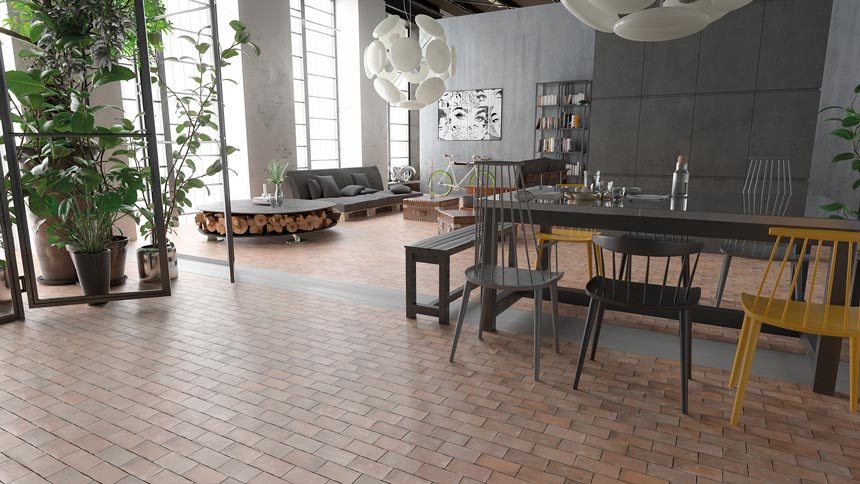
This is why ceramic tiles are easier to cut and shape, making their installation somewhat easier. Porcelain tiles on the other hand may require some specialist expertise for they are more brittle.
…it is their porosity attribute based on a water absorption test that ultimately defines their classification to ceramic or porcelain.
Since ceramic tiles are more porous they are prone to cracking in cold frosty weather. Consequently, they are not recommended for outdoor use unless placed somewhere with dry and no frost conditions. If you happen to store ceramic tiles somewhere outdoors, then do make sure that you allow these tiles to warm up to room temperature before installing, in order to avoid cracking.
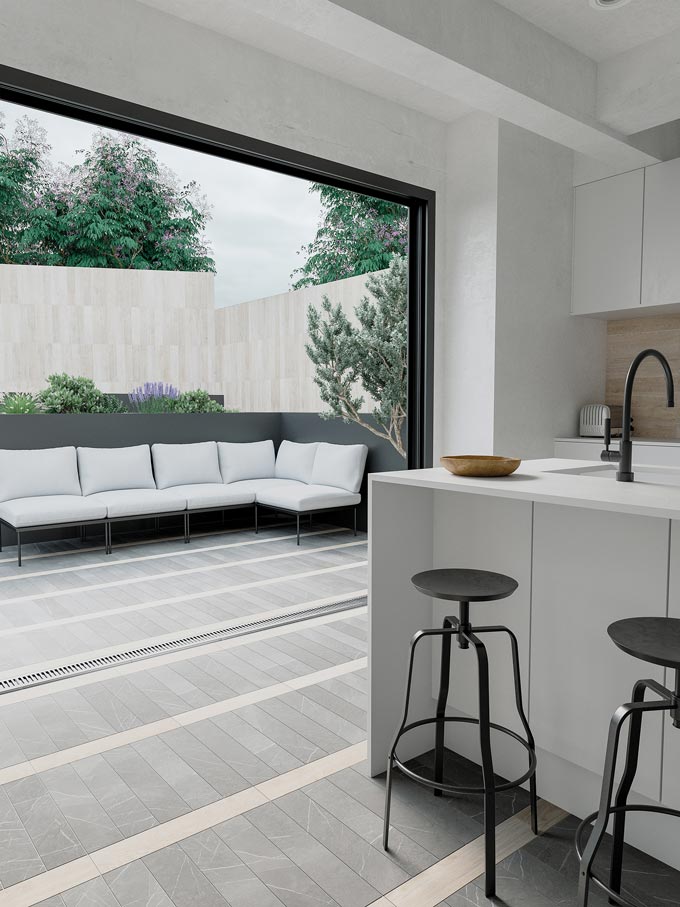
Another difference between ceramic and porcelain tiles is their color. Ceramic tiles owe their patterned color(s) to the glazing. So if a ceramic tile happens to chip, then chances are that you’ll be able to see its real color underneath and that shows quite a bit. On the other hand though, glazing makes a tile more stain resistant. Note that ceramic tiles may also come unglazed. However, their surface is much harsher – think of sandpaper.
Types of Porcelain Tiles
What about the color of porcelain tiles?
There are two types of porcelain tiles: the homogeneous (or full body) and the glazed ones. In homogeneous porcelain tiles, the surface of the tile is of the same color as its whole body. It is consistent throughout. Any discrepancies indicate poor quality – so avoid those. The glazed porcelain tiles though are further enhanced with a glazing layer during the manufacturing process interpolating by far the available range in color and patterns. Obviously, that glazing layer (just like with glazed ceramic tiles) is also susceptible to chips and dents and any damage to it will not go unnoticed.
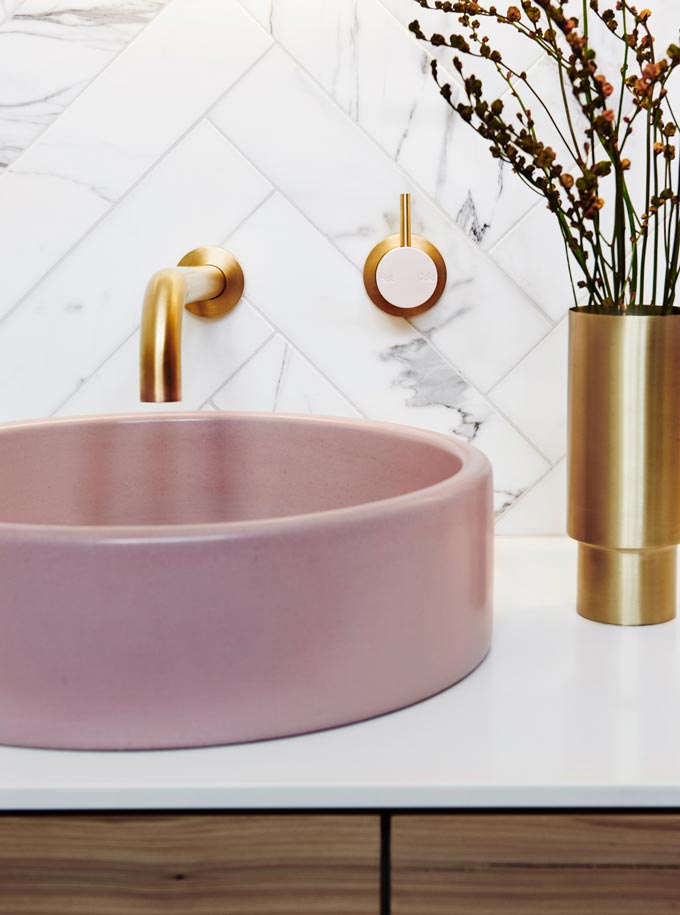
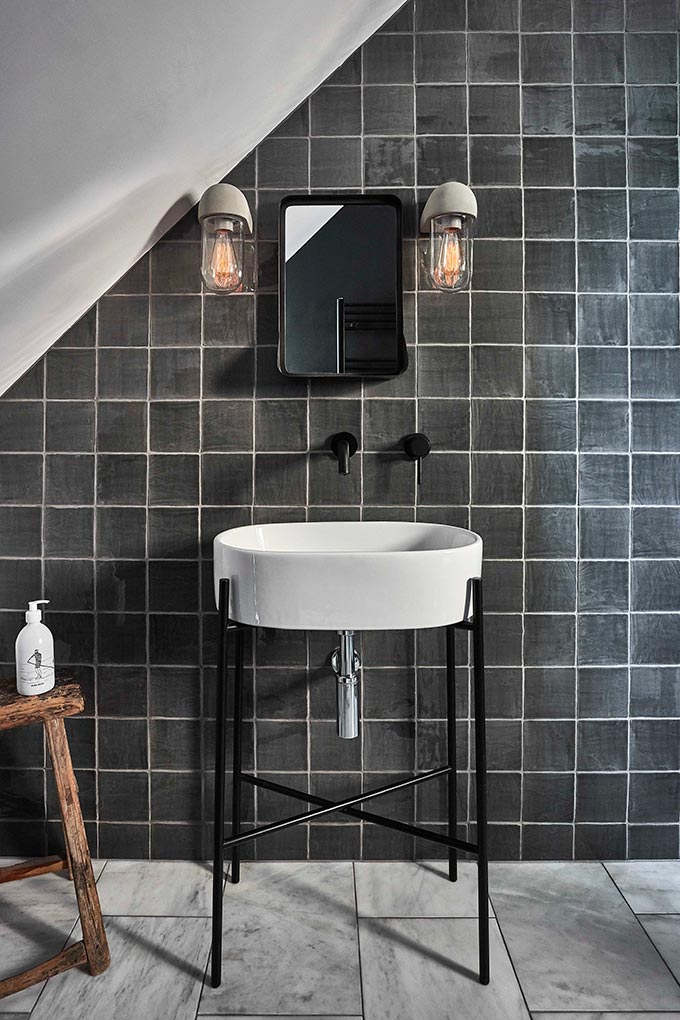
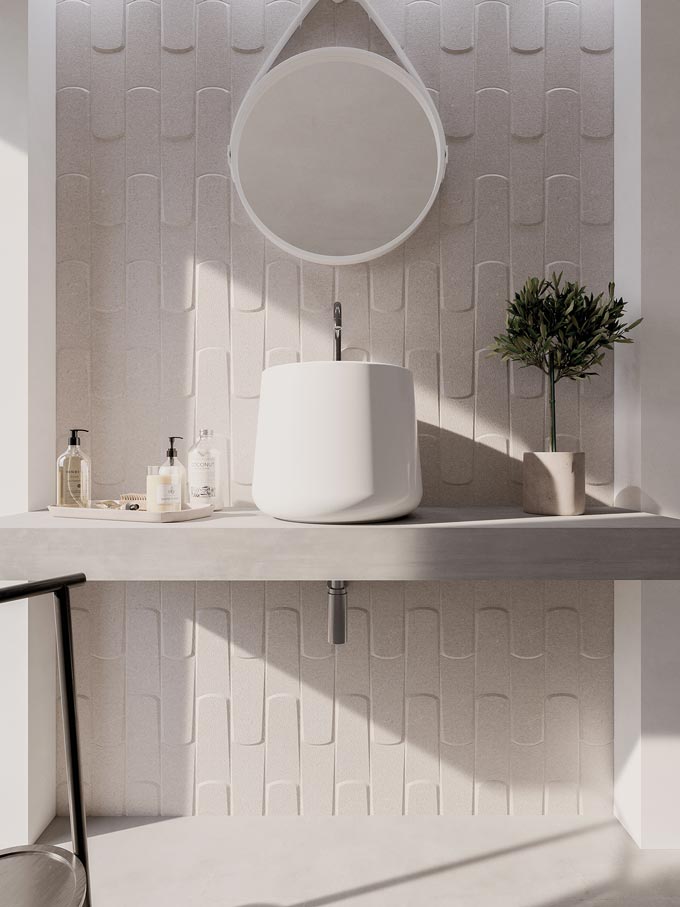
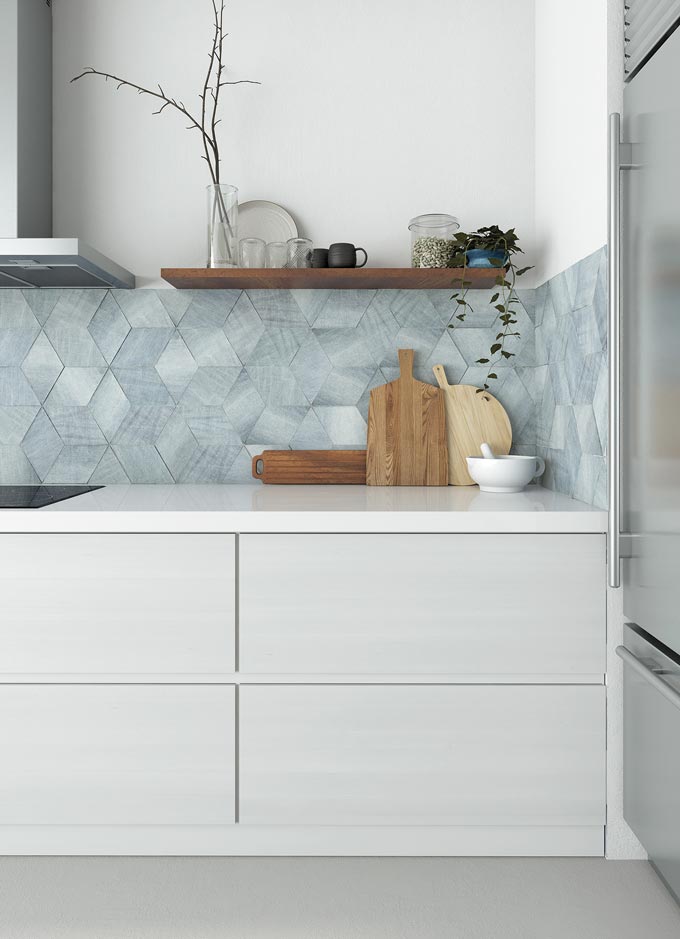
How to Tell a Ceramic from a Porcelain Tile
How can you tell a ceramic from a porcelain tile?
One way to tell a ceramic tile from a porcelain tile is to examine the sides of it. Ceramic tiles have a distinct red, white or tan color on the side with a colored glaze on top. Tiles with side colors other than those implies a porcelain tile. Any chips in the glaze may also give away the identity of the tile. A white or tan base indicates a ceramic tile. Last but not least, run your fingers across the unglazed surface of the tile. Porcelain tiles have a smoother finish than ceramic tiles.

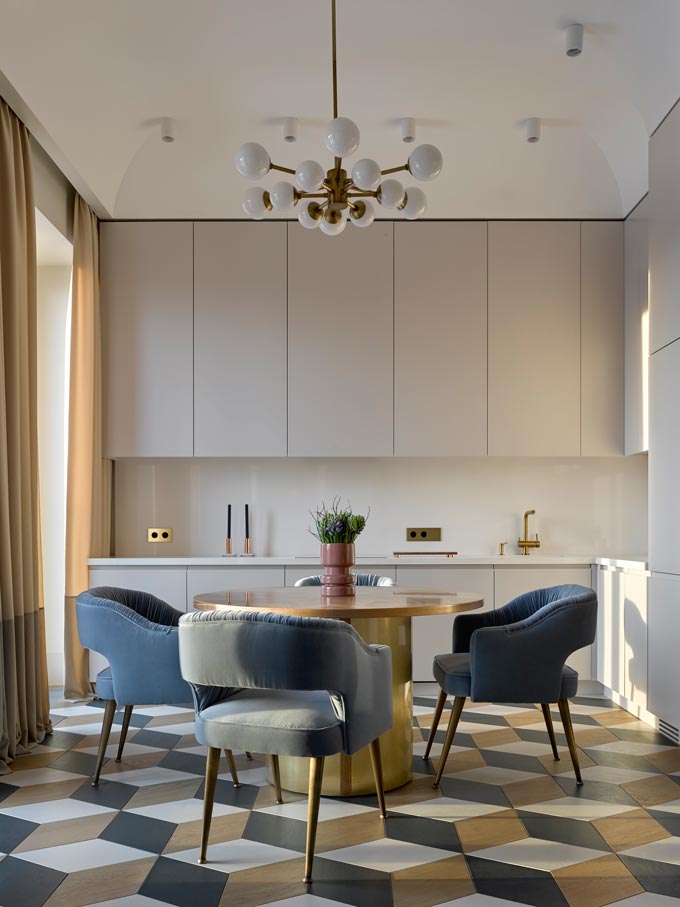
Cost Difference
Which is more expensive?
Porcelain tiles are more expensive, but if you consider their durability and performance in areas with moisture and/or high traffic load where abrasion occurs then, the advantages outweigh their cost in the longrun.
Distinguishing the Type of Tile in Existing Installations
How can you tell what type of tile is installed?
The location of the tile installation may be the first indication of its type. Porcelain tiles for example are used widely in bathrooms, laundry rooms and patios.
Stains, is another giveaway. Ceramic tiles are more likely to have stains because of their porous nature. Next, examine the surface of the tiles. Any discrepancies in the size of the tiles indicates the installation of a ceramic tile.
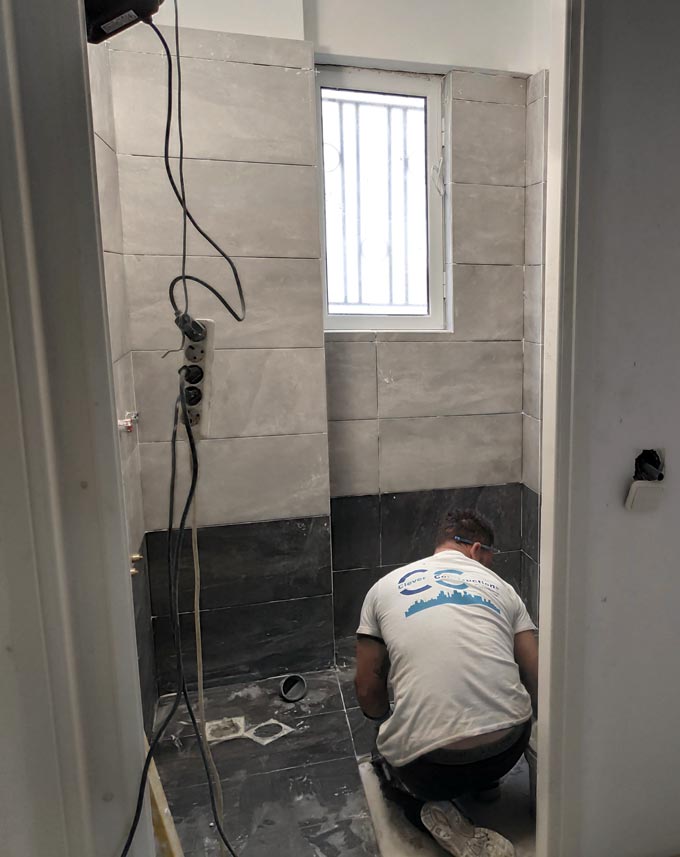
Lastly, I check closely at the thickness of the grout. Most designers like myself prefer the smallest possible grout and porcelain tiles can deliver that because of their exact sizing. Hence, very thin and straight grouts indicate porcelain tile installation. On the other hand, due to the uneven sizing of the ceramic tiles, thicker grouts are required and that is a telltale sign.
Ceramic or porcelain?
Which tile should you choose:
When durability is of concern, then opt for porcelain. Porcelain tiles are more durable. Likewise, because of the impervious nature they perform best in areas with high moisture areas i.e. bathrooms, laundry rooms and outdoor patios. Ceramic tiles are great indoors for wall and floor installations in areas with little moisture i.e. bedrooms, home offices, playrooms e.t.c. If spillages are of concern like on a kitchen floor or better yet at a commercial/industrial space, then porcelain tiles are your best go-to choice. Lastly, avoid any type of glazed tiles in areas where accidents may occur because of their slippery surface i.e. bathroom floors.
Underfloor heating
What if you have underfloor heating?
Both ceramic and porcelain tiles are suitable with underfloor heating. However, using suitable flexible adhesives and grout will ensure that any potential movements in the subfloor will not affect your tile flooring.
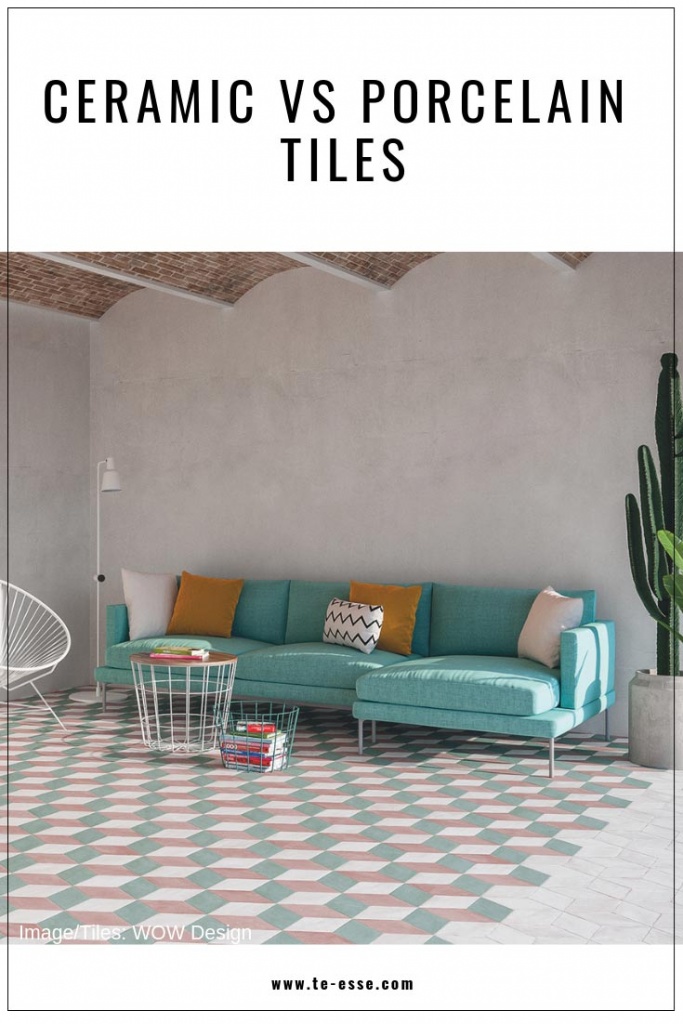
A Last Word
When you go to buy tiles be sure to specify the intended use and location for the tile. Tiles come in grades based on a rating system, (PEI in the US) and have varying specifications. Hence, it’s important to share your plans and concerns in order to get the best possible advice.
Finally, I would like to mention that ceramic tiles are a great option to consider if you are looking for a way to customize an installation of yours. I have written about the beauty of handmade tiles where I share some gorgeous decorating ideas with ceramic tiles that can’t be done with porcelain tiles. So that’s it with regards to ceramics vs porcelain tiles.
Next, week I will be attending the much awaited Salone del Mobile in Milan. It is probably the biggest design fair of the year and I’m really looking forward to it. So, next week I will be posting stories on Instagram (please follow me there if you care to see all the exciting things that I will be seeing) and prepare a big post for you all with all my insights once I return.
Love always,





Its hard to find knowledgeable people on this topic, but you sound like you know what you’re talking about! Thanks